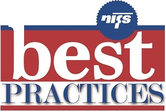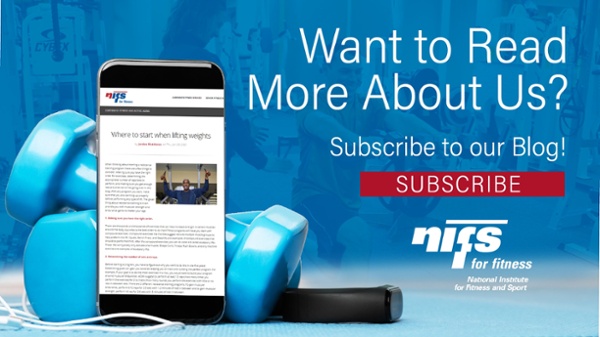 In part 1 of this blog, I wrote about a program we offered that helped us address an area of opportunity for resident participation in our senior living fitness programs. One of the core messages from that blog was how important tracking participation data is, over time, for sustaining a truly successful program. There is so much more to a robust fitness program in senior living than hosting classes, offering assessments, and teaching residents how to use the equipment.
In part 1 of this blog, I wrote about a program we offered that helped us address an area of opportunity for resident participation in our senior living fitness programs. One of the core messages from that blog was how important tracking participation data is, over time, for sustaining a truly successful program. There is so much more to a robust fitness program in senior living than hosting classes, offering assessments, and teaching residents how to use the equipment.
Tracking participation data in your fitness services is crucial for any new or long-established program. In new programs, you need to simply start by keeping an eye on growth in membership and making sure participation steadily increases as you launch the offerings. In this blog, I’ll touch on some key numbers and trends you should be watching.
An established fitness program you might consider “good” can become GREAT by tracking and strategically using participation data for continuous improvement. There is not an end date at which you cut off these practices no matter how old your program is. In addition to talking about data practices for new fitness programs, I’ll offer tips below from NIFS data trends over the past couple of years to show how you can use these practices to fine-tune an established fitness program.
 Kickstart Your New Community Fitness Program
Kickstart Your New Community Fitness Program
New members: Part 1 of this series covered NIFS Fitness Freeze and how the membership drive component recruited new participants to join the fitness center. NIFS has a new client in Lakewood, New Jersey, that began staffing with us in August 2014. Since our launch, we witnessed an initial surge in residents enrolling, and then the normal steady trickle of participants in the months thereafter. And then we ran the Fitness Freeze and it generated a record-setting surge in new members in a month to finish off the year. If you are tracking your new members from month to month, you can keep an eye on when membership or participation starts to trickle off or plateau and run a targeted campaign to rebuild your momentum.
Participation frequency: We have another client in Mystic, Connecticut, that launched with us in May 2014. In addition to tracking their steadily increasing membership rates, we’re also following the percentage of residents who visit the fitness center 8+ times in a month. For this relatively new client, that percentage is steadily climbing as the membership percentage increases. This tells us that more residents are joining, and more importantly, they are adopting a consistent routine once they become members.
Fine-Tune Your Established Fitness Program
Group fitness participation: We have a client in Stone Mountain, Georgia, that has had a fitness program and staffing since they opened their doors in 2004. NIFS started managing their fitness program in October 2011. Over the past couple of years, we’ve had a lot of success with participation growth in group fitness classes, and because our data offered proof of that growth, we were able to garner budgetary support for more instructors. In 2014, we added 11 new classes per month to the schedule, and the average number of participants per class each month stayed the same. In short, we brought the residents more classes, and they took full advantage!
Personal training participation: Another client in Phoenix, Arizona, is showing steady growth in their personal training program. In 2013, there were 302 personal training sessions conducted, and in 2014 there were 707 personal training sessions conducted. We’ve added personal training as a program option in their health center, and we are currently hiring another personal trainer to help keep up with the demand for that growing service.
Membership rates: Lastly, three different communities that have been up and running with us for over five years all showed an increase of at least 4% or more in membership in 2014 compared to 2013, with little change in occupancy at those communities. Steady programming efforts targeted to spark different resident interests over time can help your membership continue to grow. Diversity in program offerings is what really drives that continual increase in membership, especially at our well-established communities.
There are countless ways that you can track and evaluate participation data in your fitness program, and half the battle is just getting started. Determine what you want to track, how you need to track it, and then how you can effectively report that data over time so that it is usable and easy to evaluate. We aren’t statisticians with intricate spreadsheets spending hours crunching data each month. We do, however, have sound reporting methods so that our staff can gather this valuable data to continually build and evolve best-in-class fitness programs at the senior living communities we serve.



 \
\

 Our staff has found that getting employees moving can be difficult. It is very often that our members speak of a variety of barriers that prevent them from exercising. We have all experienced hectic schedules that interfere such as work meetings and events, overtime, family events such as a child’s activities. It’s our job to help our members find ways to fit it in to their schedule, make time for themselves to live a healthier lifestyle. Be Active Be Fit is a program that was developed to encourage participants to strive for 150 minutes of physical activity a week for 8 weeks. Participants are encouraged to count any time they are doing physical activity no matter what the activity. Whether you prefer to bike or run, maybe you walk or swim, right down to mowing the yard and cleaning the house with reasonable effort can count.
Our staff has found that getting employees moving can be difficult. It is very often that our members speak of a variety of barriers that prevent them from exercising. We have all experienced hectic schedules that interfere such as work meetings and events, overtime, family events such as a child’s activities. It’s our job to help our members find ways to fit it in to their schedule, make time for themselves to live a healthier lifestyle. Be Active Be Fit is a program that was developed to encourage participants to strive for 150 minutes of physical activity a week for 8 weeks. Participants are encouraged to count any time they are doing physical activity no matter what the activity. Whether you prefer to bike or run, maybe you walk or swim, right down to mowing the yard and cleaning the house with reasonable effort can count. 
 In
In